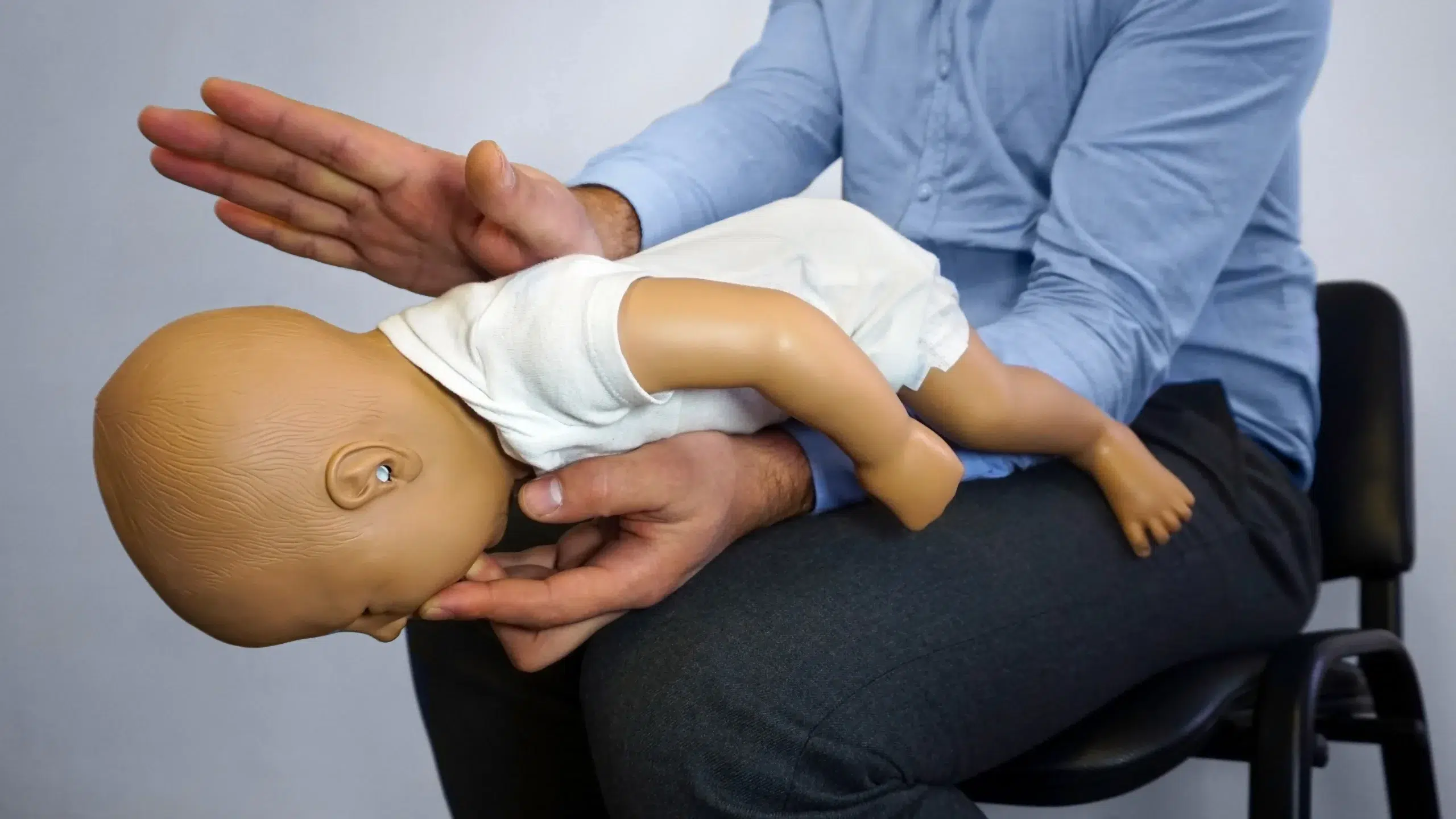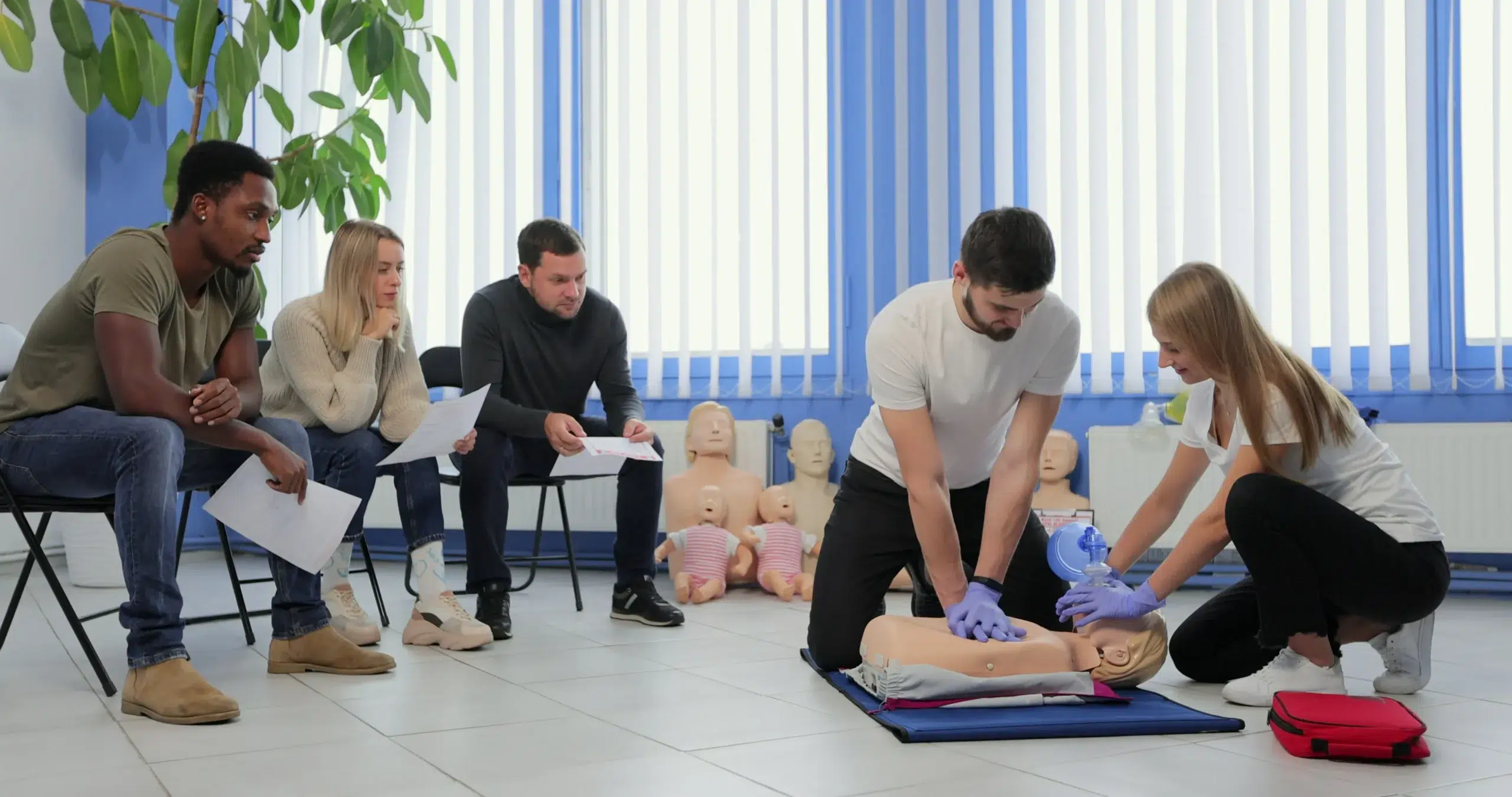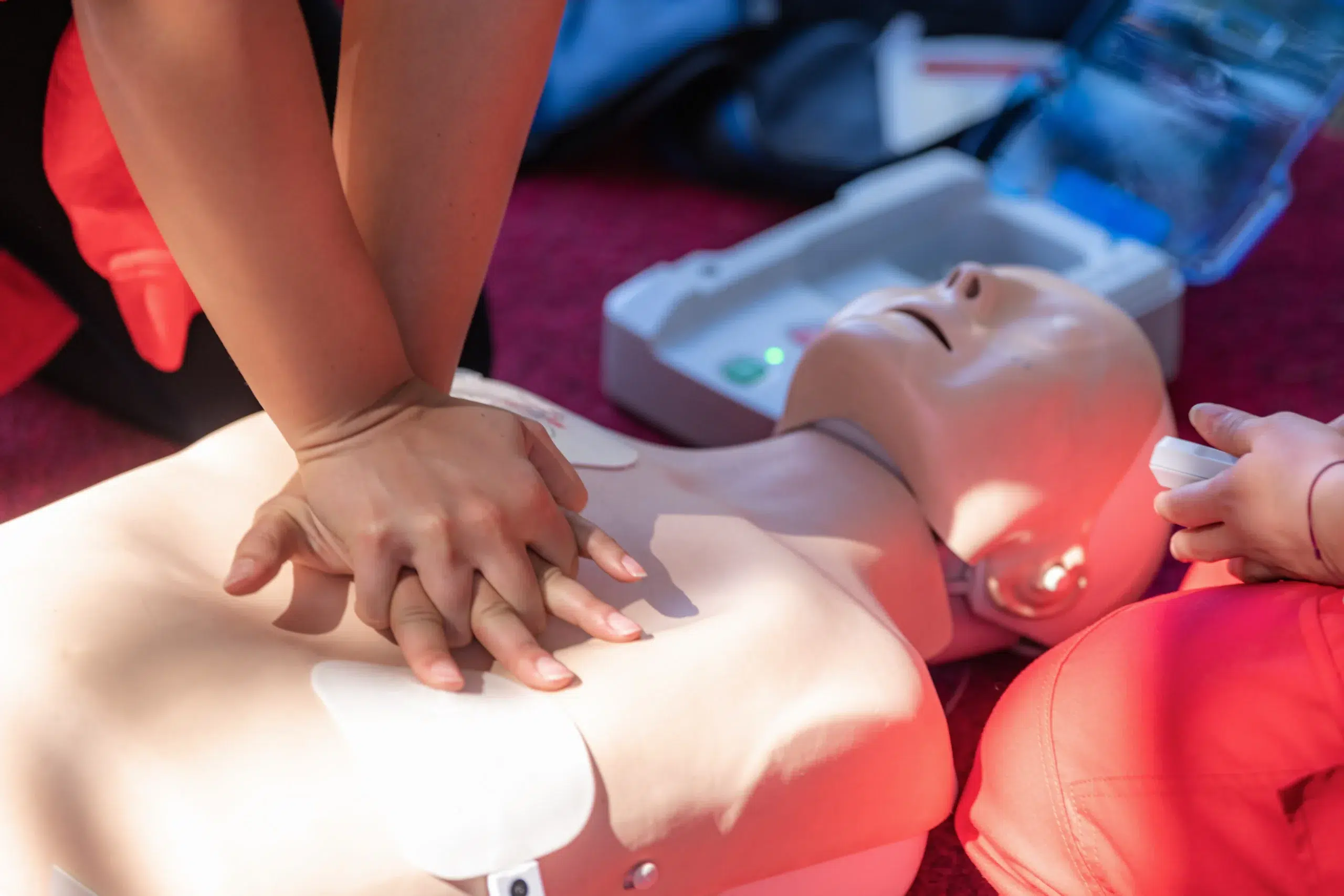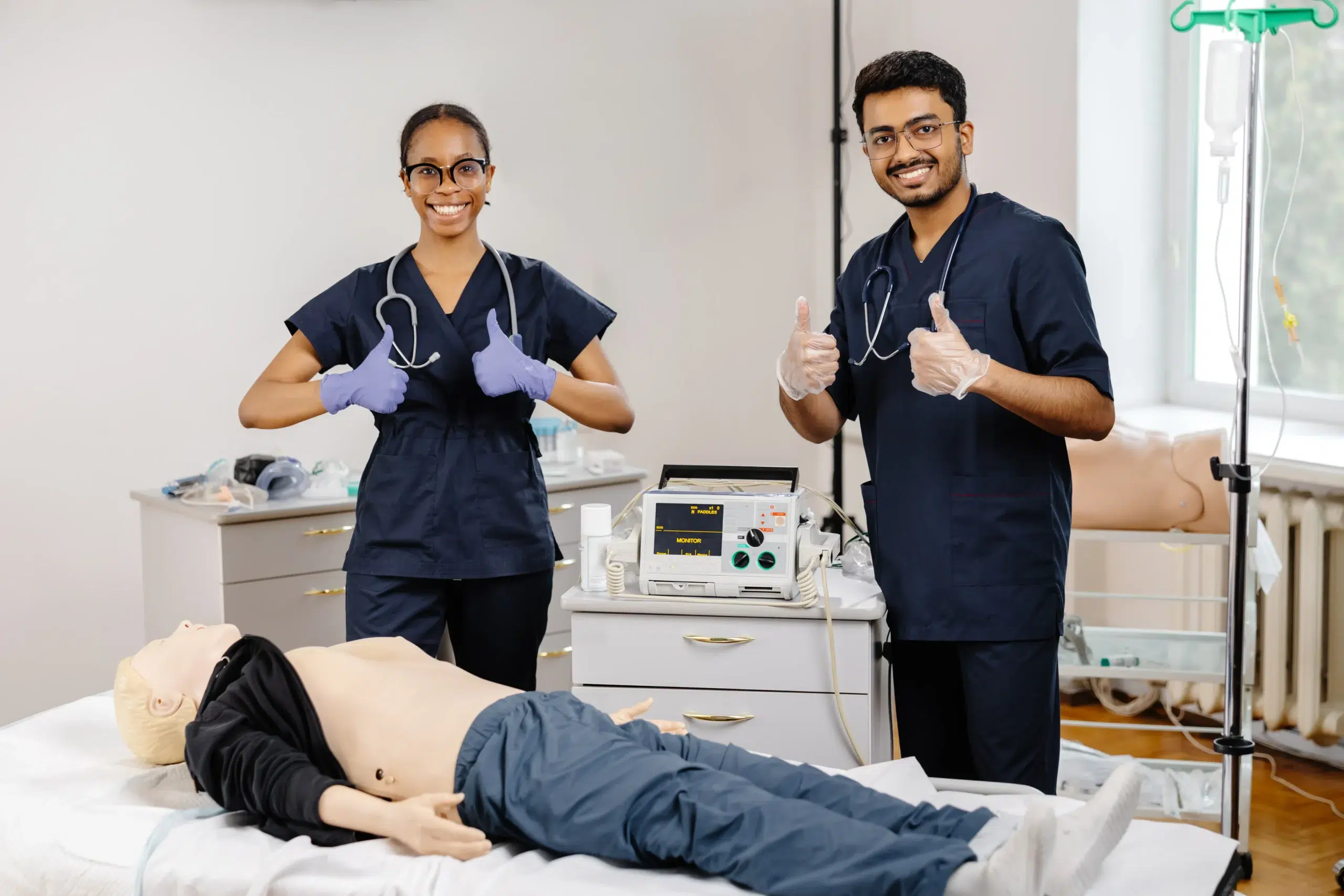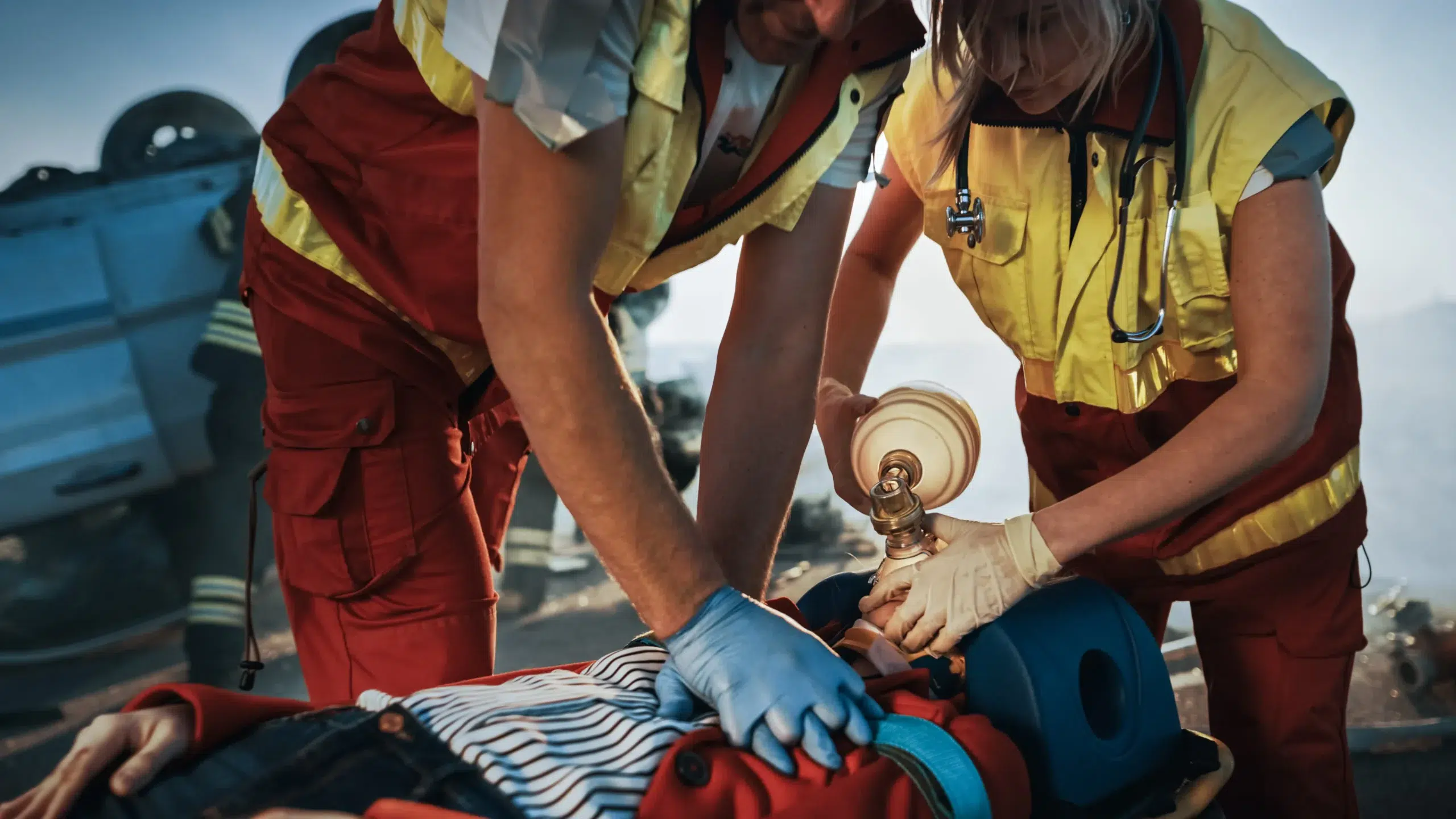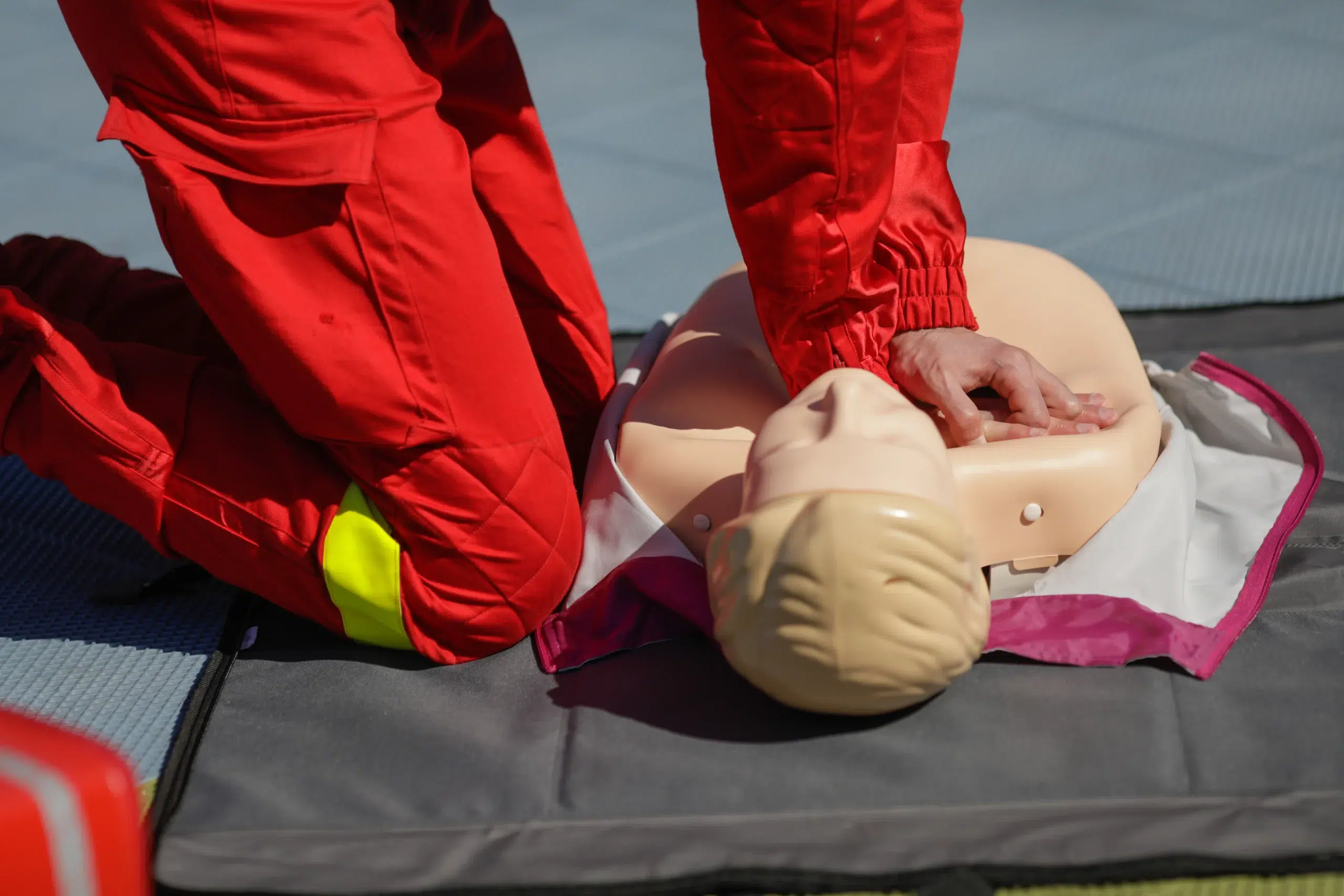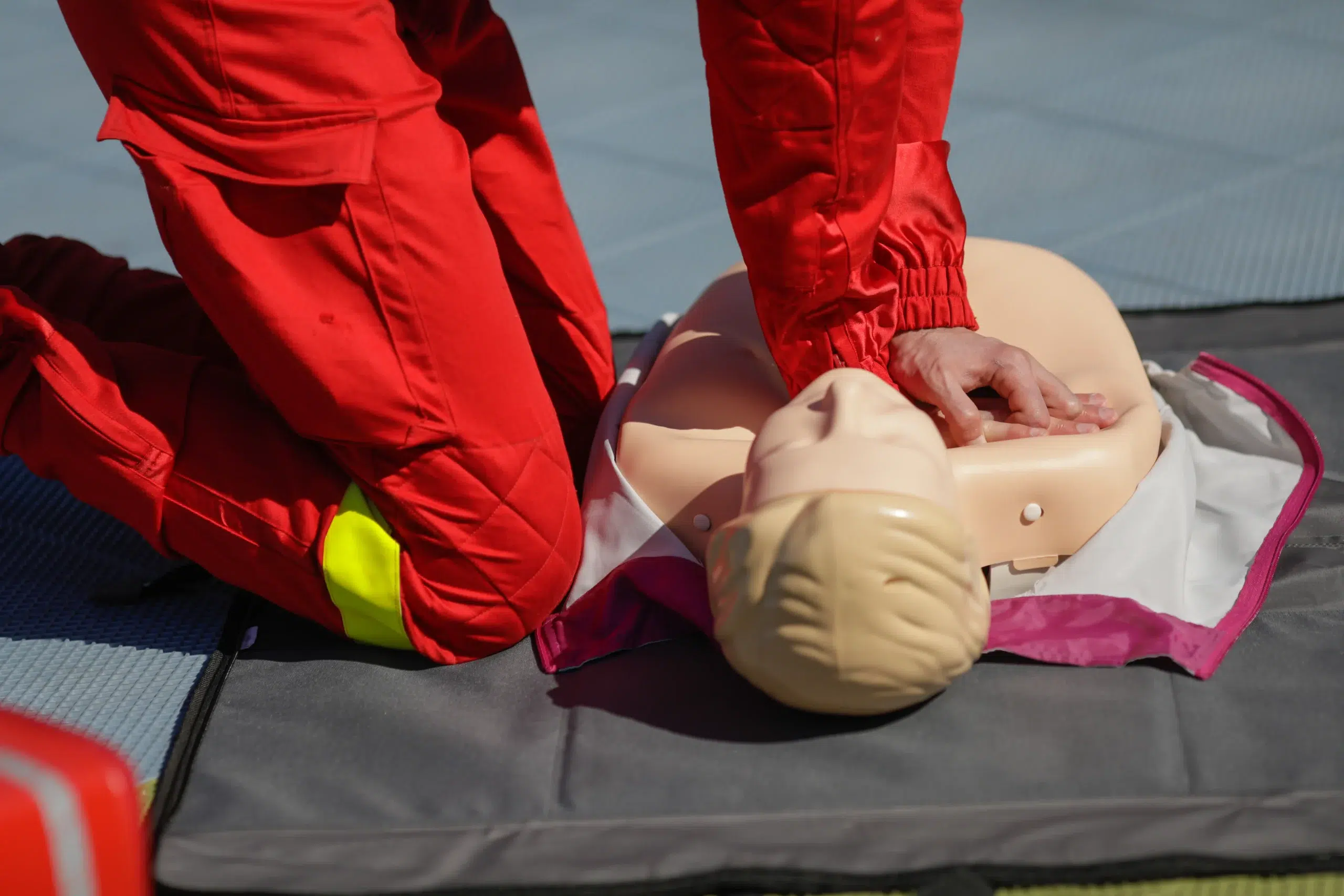In any medical emergency, the first few minutes are crucial. Having basic first-aid knowledge can be the difference between a minor incident and a serious problem. This comprehensive guide explores the importance of first-aid training and helps you find the perfect first-aid classes near me. We’ll cover various types of training, including CPR, AED usage, and specialized courses for different age groups and environments. You’ll learn about the benefits of certification, typical costs, and what to expect in a first-aid class. We’ll also provide practical tips for finding reputable training providers in your local area, ensuring you receive high-quality instruction. Whether you’re a parent, a teacher, a healthcare professional, or simply someone who wants to be prepared for anything, this guide will empower you to act quickly and confidently in any medical emergency.
Key Takeaways
- First-aid skills empower you in emergencies: Be prepared to help in situations ranging from minor injuries to life-threatening events by learning essential techniques and gaining the confidence to act quickly.
- Finding the right class is straightforward: Use online resources and check with local community groups to discover convenient and affordable options that align with your schedule and learning preferences.
- First-aid training offers lasting value: It builds confidence, enhances career opportunities, and strengthens community safety, making it a worthwhile investment for anyone.
What are First-Aid Classes?
First-aid classes teach you how to handle medical emergencies, covering everything from minor cuts and burns to more serious incidents like choking or sudden cardiac arrest. These courses give you the confidence to step in when someone needs help, providing immediate care until professional medical help arrives. Think of it as equipping yourself with a practical toolkit of life-saving techniques. First-aid classes empower you to make a real difference in critical moments.
Types of First-Aid Training
Several types of first-aid training cater to different needs and interests. Basic first-aid courses cover essential skills everyone should know. More specialized training, like CPR/AED certification, focuses on life-threatening situations. There are also targeted courses for childcare providers, workplace settings, and even wilderness environments. The best choice depends on your specific circumstances and goals. At Safety Training Seminars, we offer a variety of first-aid and CPR courses to meet the diverse needs of our community in San Jose, Santa Clara, and Sunnyvale.
Why First-Aid Skills Matter
Learning first-aid isn’t just about gaining knowledge; it’s about making a tangible impact. These skills can help you save lives and prevent minor injuries from becoming major problems. Knowing how to respond effectively in an emergency can reduce the severity of injuries and improve the chances of a positive outcome. First-aid training also empowers you to assist others in need, fostering a sense of responsibility and community. Whether it’s a family member, a friend, a coworker, or even a stranger, your first-aid skills can make all the difference.
Find First-Aid Classes Near You
Finding the right first-aid class shouldn’t feel like a scavenger hunt. Locating training near you is easier than you think, whether you prefer online learning or in-person instruction. Here’s how to get started:
Use Online Search Tools
Online search tools are your best friend when searching for local classes. Sites like Yelp can help you discover nearby businesses offering first-aid training, complete with user reviews and ratings. Just search for “First Aid Training” and see what’s available in your area. The American Red Cross also has a website that makes it easy to find classes across the US. They offer various learning formats, including online, in-person, and blended learning, so you can choose what works best with your schedule.
Check Local Organizations
Think local! Community organizations and universities often host first-aid training. Check with your local community center, or if you’re near a university, see what their recreation department offers. For example, Valdosta State University offers various Red Cross certifications through its Campus Recreation department. Many fire departments also offer free or low-cost CPR, AED, and first-aid training to residents, so it’s worth checking their websites or giving them a call. You might be surprised at the resources available right in your neighborhood.
Explore First-Aid Class Types
Knowing which first-aid course best suits your needs helps narrow your search. Here’s a rundown of common first-aid and CPR classes:
Basic First Aid
Basic first-aid courses cover essential skills like treating minor injuries, managing bleeding, and handling common medical emergencies. These first-aid courses teach you how to respond effectively until professional medical help arrives. They’re helpful for anyone who wants to be prepared for everyday situations.
CPR and AED Training
CPR and AED training teaches you how to perform cardiopulmonary resuscitation and use an automated external defibrillator. This training is crucial for responding to cardiac arrest and other life-threatening emergencies. CPR and AED certification is often a job requirement for healthcare providers, fitness professionals, and other roles. Even if it’s not required, it’s a valuable skill.
Child and Baby First Aid
Child and baby first aid focuses on the specific needs of infants and children during medical emergencies. You’ll learn age-appropriate first-aid techniques, CPR, and how to recognize signs of illness or injury in young children. This first-aid class is especially relevant for parents, caregivers, teachers, and anyone who regularly interacts with kids.
Wilderness First Aid
If you enjoy hiking, camping, or other outdoor activities, wilderness first aid is a must. These courses prepare you for medical emergencies in remote locations where access to medical care might be delayed. You’ll learn how to handle injuries in the wilderness, manage environmental hazards, and improvise solutions with limited resources.
Workplace First Aid
Many workplaces require employees to have basic first-aid and CPR training. Workplace first-aid courses often cover topics relevant to specific industries, such as handling chemical spills or responding to workplace accidents. These courses ensure that employees can provide immediate assistance during an emergency on the job.
Understand Class Costs & Duration
Knowing the cost and time commitment beforehand helps you choose the right first-aid class. Several factors influence both, so it’s smart to do your research and compare options.
Typical Price Ranges
First-aid course costs vary. Expect to pay anywhere from $75 to $150, depending on the provider, your location, and the type of training. For example, basic first aid and CPR/AED training often fall within this range. More specialized courses, like wilderness first aid or pediatric advanced life support (PALS), might have higher price tags. Safety Training Seminars offers a low price guarantee on many of its courses.
Factors Affecting Cost
Several things can influence how much a first-aid class costs. The level of training and the certifying organization play a big role. A basic first-aid course will typically be less expensive than a more advanced course like ACLS or PALS. Also, the length of the course matters. Longer courses generally cost more. Safety Training Seminars offers various courses like BLS, ACLS, and PALS.
Discounts and Promotions
Look for discounts! Many training providers offer deals, especially for bundled courses or group registrations. Check Groupon for potential savings on first-aid and CPR training. Some providers also offer discounts for students, seniors, or members of certain organizations.
Typical Class Length
Most basic first-aid classes are around four to six hours long. This usually covers essential skills like CPR, using an AED, and handling common injuries. More advanced courses, such as wilderness first aid, can be significantly longer, sometimes spanning several days. Check the specific course description for details on the time commitment. Safety Training Seminars offers a variety of course lengths to fit your schedule.
Certification Renewal
First-aid certifications typically expire after two years. Plan to retake the course to keep your skills fresh and your certification current. Renewal courses are often shorter than the initial certification course, focusing on updates and a refresher of key skills. Check with your certifying organization or training provider for specific renewal requirements.
What Happens in a First-Aid Class?
Curious about what goes on in a first-aid class? It’s a mix of learning key concepts and practicing essential skills, all geared toward preparing you for various emergencies. Here’s a preview:
Classroom Instruction
First-aid courses start by covering fundamental first-aid principles and how to assess emergencies. You’ll learn to recognize the signs of different medical emergencies, understand basic anatomy, and explore essential first-aid techniques. This foundational knowledge helps you respond effectively and confidently in real-life situations. Many courses, like those offered by the American Red Cross, cover adult, child, and infant first aid, making sure you’re prepared to help anyone who needs it.
Hands-On Practice
Theory is only part of the equation. First-aid classes emphasize hands-on practice to solidify your skills. You’ll have opportunities to apply techniques like CPR, bandaging wounds, and splinting fractures in a safe environment. This practical experience builds your muscle memory and confidence, allowing you to react quickly and efficiently under pressure. Some courses, such as those offered by HSI, combine online learning with in-person sessions for a balanced approach.
How You’re Assessed
Most first-aid courses require full attendance and a skills test to receive certification. This assessment ensures you’ve grasped the material and can perform the necessary techniques correctly. Some programs, like those at Valdosta State University, have a separate test before the course ends. Once certified, remember that it’s usually valid for two years and needs renewal. You can find renewal courses through providers like the American Red Cross.
Choose the Right First-Aid Class
So, you’ve decided to take a first-aid class—fantastic! Now, let’s make sure you find the perfect one. Choosing the right class involves a little research, but it’s worth it to ensure you get the most from your training.
Assess Your Needs
First things first: think about why you want first-aid training. Are you required to have it for your job? Are you preparing for a specific situation, like caring for children or exploring the great outdoors? Some classes, like wilderness first aid, cater to specific environments and scenarios. Others, like the Heartsaver CPR/AED/First Aid course, are designed for the general public and cover a broader range of situations. Also, be aware that some classes may have minimum age requirements, so check those before you register. Knowing your needs will help you narrow your options. This article on First Aid & CPR Training offers additional insights into certification and its importance.
Compare Providers
Not all first-aid training providers are the same. Look for providers certified by reputable organizations like the American Heart Association or the American Red Cross. Safety Training Seminars offers a variety of courses, including CPR and first-aid training, in a supportive learning environment. Consider factors like class size, location, and teaching style. Some people prefer smaller classes for more personalized attention, while others might prioritize a location close to home or work. A relaxed, low-stress learning environment can also make a big difference in how much you absorb. For more information on the services offered by Safety Training Seminars, you can visit their website.
Check Reviews & Testimonials
Before you sign up, see what other people are saying. Online reviews on platforms like Yelp can offer valuable insights into the quality of instruction, the helpfulness of the staff, and the overall learning experience. Reading reviews can give you a feel for what to expect and help you avoid any surprises. Look for comments about engaging instructors, effective teaching methods, and a positive learning environment. A little research can go a long way in finding the right fit for you. You can also find reviews for Safety Training Seminars on Groupon.
First-Aid Class Providers in San Jose
Finding the right first-aid class often means finding the right provider. Here are a few options to explore in San Jose:
Safety Training Seminars
Safety Training Seminars offers a range of American Heart Association certification courses, including CPR and first-aid. They focus on providing affordable, high-quality training in a comfortable learning environment. Classes are available in both English and Spanish, catering to a diverse community. Check their website for course schedules and their low price guarantee. They also offer training for other certifications like BLS, ACLS, and PALS.
American Red Cross
The American Red Cross is a well-known provider of first-aid and CPR training. They offer various learning options, including online courses, in-person classes, and blended learning that combines online modules with hands-on skills sessions. This flexibility allows you to choose the format that best suits your learning style and schedule.
Local Hospitals and Medical Centers
Many hospitals and medical centers in and around San Jose offer first-aid and CPR training to the public. These classes are typically taught by experienced medical professionals. Some hospitals may also offer specialized training tailored to healthcare providers or specific community needs. Contact your local hospitals or check their websites for more information.
Community Colleges and Universities
Local community colleges and universities often offer first-aid training through their continuing education programs. These courses are generally open to the public and can be a great way to learn essential first-aid skills. Check with institutions like San Jose City College or Evergreen Valley College for their course offerings and schedules.
Prerequisites & Enrollment
Getting started with first-aid training is easier than you might think. This section covers everything you need to know about prerequisites and signing up.
Age Requirements
While specific age requirements can vary, most first-aid and CPR courses are open to almost everyone. Some classes may have a minimum age, often around 12–15 years old, for certification. It’s always best to check with your chosen provider for their specific age guidelines.
Health Considerations
You don’t need prior medical knowledge to take a first-aid class. These courses are designed for people of all backgrounds, from complete beginners to healthcare professionals seeking recertification. If you have any concerns about your physical ability to perform certain techniques, discuss them with the instructor. They can offer modifications or alternative approaches to ensure everyone can participate.
How to Register
Registering for a first-aid class is usually straightforward. Many providers, including Safety Training Seminars, offer online registration. You can browse available dates, choose a convenient location, and often complete your enrollment in just a few clicks. Some organizations also accept registration by phone or in person. Look for providers who offer training based on American Heart Association standards. If you have a group, ask about group discounts or private classes.
Benefits of First-Aid Training
Knowing what to do in a medical emergency can make all the difference. First-aid training equips you with the skills to respond effectively and confidently, benefiting not just yourself but also your career and community. Let’s explore these advantages.
Empower Yourself
First-aid training empowers you to take control in emergency situations. Instead of feeling helpless, you’ll have the knowledge and skills to assess the situation and provide immediate assistance. This can range from treating minor injuries like cuts and burns to managing more serious situations while waiting for professional medical help. As the American Heart Association points out, both CPR and first-aid training are essential life-saving techniques. Being trained in both significantly increases your ability to help someone in need, giving you confidence in your daily life.
Advance Your Career
In many professions, first-aid certification is a requirement or a significant advantage. Fields like childcare, education, coaching, and construction often prioritize candidates with these skills. For healthcare professionals and medical students, certifications like Basic Life Support (BLS) are essential for career advancement. Even if not strictly required, having first-aid training demonstrates your commitment to safety and preparedness, making you a more valuable employee. It can open doors to new opportunities and enhance your professional profile.
Improve Community Safety
First-aid training has a ripple effect, extending beyond personal and professional benefits to enhance community safety. When more people are equipped to handle emergencies, the community becomes more resilient. From responding to accidents at home or in public spaces to assisting during community events, your skills can make a real difference. Programs like those offered by the Red Cross highlight the importance of community-wide first-aid training, creating a network of prepared individuals ready to respond when needed. By investing in your first-aid training, you’re also investing in the well-being of those around you.
Related Articles
- First Aid Training in San Jose: Your Guide – San Jose CPR Classes
- Pediatric CPR & First Aid Classes in San Jose – San Jose CPR Classes
- CPR & First Aid Training in San Jose: Your Guide – San Jose CPR Classes
- San Jose CPR Classes: Find Certification Near You – San Jose CPR Classes
Frequently Asked Questions
What’s the difference between basic first aid and CPR training? Basic first aid focuses on treating common injuries like cuts, burns, sprains, and recognizing signs of medical emergencies. CPR training specifically teaches you how to perform cardiopulmonary resuscitation for someone experiencing cardiac arrest. While distinct, they often complement each other, and many courses combine both.
How long does a first-aid certification last, and how do I renew it? Most first-aid certifications are valid for two years. To renew, you’ll need to retake the course before your current certification expires. Renewal courses are often shorter, focusing on refreshing your knowledge and skills. Check with your certifying organization or training provider for specific renewal requirements.
I’m nervous about the hands-on practice. What should I expect? The hands-on portion of a first-aid class is designed to be a safe and supportive learning experience. Instructors guide you through each skill, providing feedback and ensuring you’re comfortable with the techniques. It’s a gradual process, and you’ll have plenty of opportunities to practice in a controlled environment before being assessed.
Are there online first-aid courses, or do I have to attend in person? Both online and in-person first-aid courses are available. Online courses offer flexibility, allowing you to learn at your own pace. In-person classes provide hands-on practice and direct interaction with instructors. Blended learning options combine online modules with in-person skills sessions. Choose the format that best suits your learning style and schedule.
How much does a first-aid class typically cost, and are there any discounts available? First-aid class costs vary depending on the provider, location, and type of course. Basic first aid and CPR courses typically range from $75 to $150. Many providers offer discounts for group registrations, students, seniors, or members of certain organizations. Check with your chosen provider for specific pricing and any available discounts.


